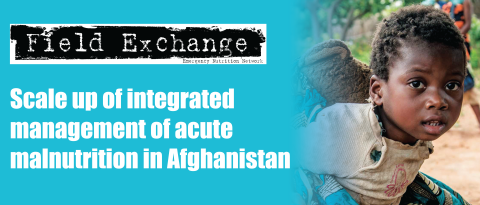Effects of nutrition interventions during pregnancy on low birth weight
Summary of research1
Location: Global
What we know: Low birth weight (LBW) is a major underlying cause of infant mortality and childhood morbidity; LBW is greatly affected by poor maternal nutrition and health.
What this article adds: A systematic review investigated evidence of effective nutrition-specific and nutrition-sensitive interventions during pregnancy for the outcome of LBW. A total of 23 systematic reviews were included, comprising 34 comparisons. Six interventions were associated with a decreased risk of LBW: oral supplementation with (1) vitamin A, (2) low-dose calcium, (3) zinc, (4) multiple micronutrients (MMN); nutritional education; and provision of preventive antimalarial drugs. MMN and balanced protein/energy supplementation had a positive effect on small-for-gestational age (SGA), while high protein supplementation increased the risk of SGA. High-dose calcium, zinc or long-chain n-3 fatty acid supplementation and nutritional education decreased the risk of preterm birth (PTB). Only three reviews performed sub-group analysis to evaluate the effect of interventions for women with different nutrition status. There is a need to further explore the evidence of nutrition-specific and nutrition-sensitive interventions to reduce LBW and to compare the results in different populations, including distinguishing interventions between women who are undernourished versus those who are adequately nourished versus those who are overweight/obese.
Low birth weight (LBW) is a major public health problem. Globally, approximately 16 per cent of infants are born weighing less than 2,500 g, which represents more than 22 million LBW babies per year (UNICEF, 2017). Over 95 per cent of these infants are born in low-income and middle-income countries. The World Health Organization (WHO) defines LBW as weight at birth less than 2,500 g, irrespective of the gestational age of the infant. LBW is a major underlying cause of infant mortality and childhood morbidity (Lawn et al, 2005). Additionally, there is a clear association between LBW and increased risk for many diseases later in life, such as metabolic syndrome, diabetes mellitus type 2, cardiovascular diseases, hypertension and cancer (Reyes and Manalich, 2005). Poor maternal nutritional status is one of several contributing factors to LBW. Early nutrition-sensitive and nutrition-specific interventions starting before or during pregnancy have the potential to prevent LBW and decrease the risks for adverse health outcomes of LBW infants. A systematic review was undertaken of the evidence for nutrition-specific and nutrition-sensitive interventions to reduce the risk of LBW and/or its components (preterm birth (PTB) and small-for gestational age (SGA)). 
Methods
A comprehensive literature search was conducted in MEDLINE, EMBASE, CINAHL and the Cochrane Database of Systematic Reviews (September 2015). Systematic reviews of randomised controlled trials (RCTs) focusing on nutritional interventions before and during pregnancy to reduce LBW and its components were eligible for inclusion. The methodological quality of the included reviews was measured using A Measurement Tool to Assess Reviews (AMSTAR), which uses 11 distinct questions to evaluate the methods used in the systematic reviews. The primary outcome was LBW, defined as weight at birth less than 2,500 g, regardless of the gestational age of the infant. Secondary outcomes included very low birth weight (VLBW) (less than 1,500 g), extremely low birth weight (ELBW) (less than 1,000 g), SGA (birth weight below the tenth percentile of gestational age), intrauterine growth restriction (IUGR) and PTB (less than 37 weeks of gestation).
Results
A total of 23 systematic reviews were included comprising 34 comparisons. Sixteen reviews were of high methodological quality, six of moderate and only one review of low quality. Six interventions were associated with a decreased risk of LBW: oral supplementation with (1) vitamin A, (2) low-dose calcium, (3) zinc, (4) multiple micronutrients (MMN); nutritional education; and provision of preventive antimalarial drugs. MMN and balanced protein/energy supplementation had a positive effect on SGA, while high protein supplementation increased the risk of SGA. High-dose calcium, zinc or long-chain n-3 fatty acid supplementation and nutritional education decreased the risk of PTB.
Vitamin A supplementation with other micronutrients (iron + folate) compared with micronutrient supplementation without vitamin A had a positive effect and reduced the risk of LBW by 33 per cent. However, these findings are from a study involving only HIV-positive women and, when comparing vitamin A supplementation alone versus placebo or no treatment, a reduction of LBW could not be observed. Other single-vitamin supplementations during pregnancy did not show any benefits for pregnancy outcomes such as LBW, PTB, SGA or IUGR.
In relation to mineral supplementation during pregnancy, calcium and zinc were effective in improving maternal and infant outcomes. Calcium supplementation during pregnancy for preventing hypertensive disorders and related problems led to 80 per cent reduction of LBW for women receiving low-dose calcium (less than 1g per day). High-dose calcium (at least 1g/day) supplementation during pregnancy reduced the risk of PTB by 24 per cent (high GRADE quality) but had no effect on LBW. Zinc supplementation resulted in a 61 per cent reduction in LBW in one review focusing on pregnancy outcomes in adolescent pregnancy. This result is in contrast, however, to a Cochrane review evaluating zinc supplementation during pregnancy, which did not find a reduction of LBW rates but demonstrated that the intervention reduced the risk of PTB by 14 per cent (moderate GRADE quality). All included reviews on MMN supplementation demonstrated a positive effect on the risk of LBW (reduction ranged from 10 per cent to 14 per cent) and SGA (reduction ranged from 10 per cent to 17 per cent).
Another review concluded that protein and energy supplementations contribute to an overall improvement of women’s nutritional status and thereby decrease the risk of adverse pregnancy outcomes. In this review, balanced protein/energy supplementation significantly reduced the risk of SGA by 21 per cent (moderate GRADE quality). On the other hand, high protein supplementation compared with low or no protein supplementation was associated with a 58 per cent increased risk of SGA (moderate GRADE quality), which indicates that high protein supplementation alone might be potentially harmful for pregnant women (details on what constituted high/low protein was not provided in the review).
A review investigating the effect of marine n-3 fatty acids on the prevention of PTB and preterm labour found a 39 per cent reduction of PTB but no effect on LBW. Although there was a beneficial effect, the review concluded that general recommendations could not be given based on their finding due to the limited number of included studies and conflicting results from other studies.
Nutritional education appeared highly effective in reducing the risk of LBW (96 per cent) and PTB (54 per cent, low GRADE quality); however, the evidence was derived from only three studies (one in Bangladesh, one in a rural area in Greece and one in low-income African-American women in the USA). Findings suggest that this intervention may be especially beneficial for undernourished pregnant women, but results must be interpreted with caution due to the limited quality of included trials.
Pregnancy increases the risk of malaria infection and malaria infection is likewise associated with an increased risk of LBW. Consistently, two included reviews show that successful prevention of malaria infection using antimalarial drugs during pregnancy significantly reduced the incidence of LBW by 27 per cent.
Only three reviews performed sub-group analysis to evaluate the effect of interventions for women with different nutrition status. For example, MMN supplementation significantly reduced the risk of PTB for women with lower body mass index (BMI) but not among those with higher BMI. Further research should address nutritional interventions in various populations.
Conclusion
Improving women’s nutritional status positively affected LBW, SGA and PTB. Based on current evidence, especially MMN supplementation and preventive antimalarial drugs during pregnancy may be considered for policy and practice. However, for most interventions, evidence was derived from a small number of trials and/or participants. Furthermore, types of participants were not restricted to maternal nutrition status, even though it seems reasonable to suggest that the effect of a nutritional intervention depends on this. Further research is needed to address nutritional interventions in various populations (undernourished versus adequately nourished versus overweight/obese women). There is a need to further explore the evidence of nutrition-specific and nutrition-sensitive interventions to reach the WHO goal of a 30 per cent reduction in the global rate of LBW by 2025.
Endnotes
1da Silva Lopes K, Ota E, Shakya P et al. Effects of nutrition interventions during pregnancy on low birth weight: an overview of systematic reviews. BMJ Glob Health 2017;2:e000389. doi:10.1136/ bmjgh-2017-000389
References
Lawn JE, Cousens S, Zupan J. Lancet Neonatal Survival Steering Team. 4 million neonatal deaths: when? where? why? Lancet 2005;365:891–900. www.ncbi.nlm.nih.gov/pubmed/15752534
Reyes L, Manalich R. Long-term consequences of low birth weight. Kidney Int 2005;68:S107–S111.
UNICEF 2017. United Nations Children’s Fund. Undernourishment in the womb can lead to diminished potential and predispose infants to early death 2014. www.data.unicef.org/ nutrition/low-birthweight.html (accessed 29 Jun 2017).


